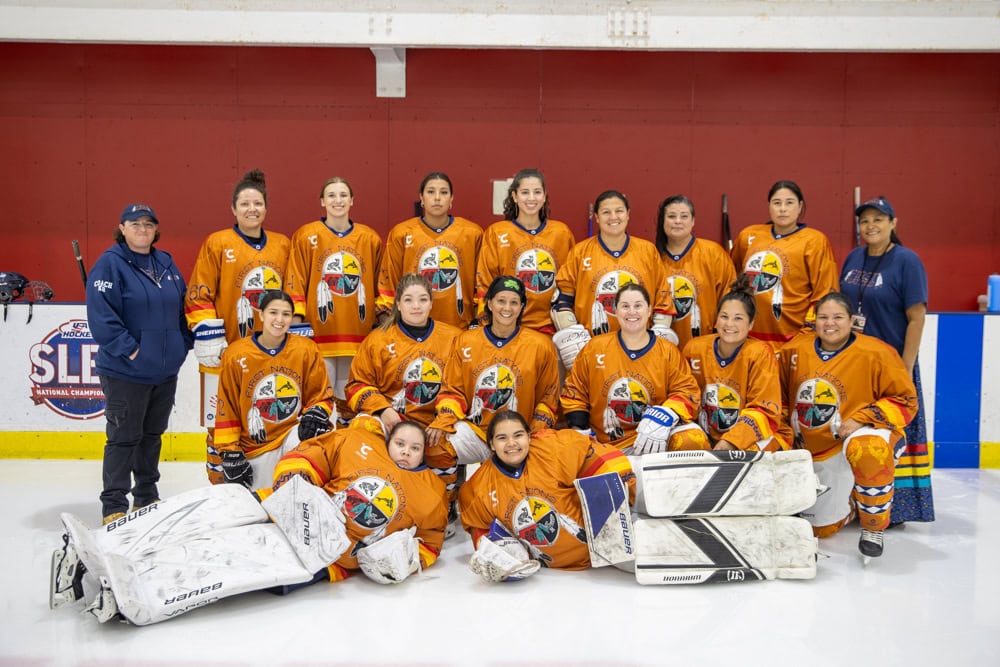When the puck dropped at the LATAM Cup, a first-of-its-kind women’s hockey team made history.
The First Nations Hockey Team, representing tribes across the U.S. and Canada, came together not only to compete but to carry their cultures into a space where Indigenous women have rarely been seen.
The team included two Choctaw Nation members: Jennifer Anderson, a veteran player and educator from Oregon, and Olivia Fern Tucker, an 18-year-old collegiate athlete. Though at different stages in life, both shared the same pride in representing their people.
Before their first game in Coral Springs, Florida, the women gathered for a smudging ceremony with ribbon skirts tied around their waists.
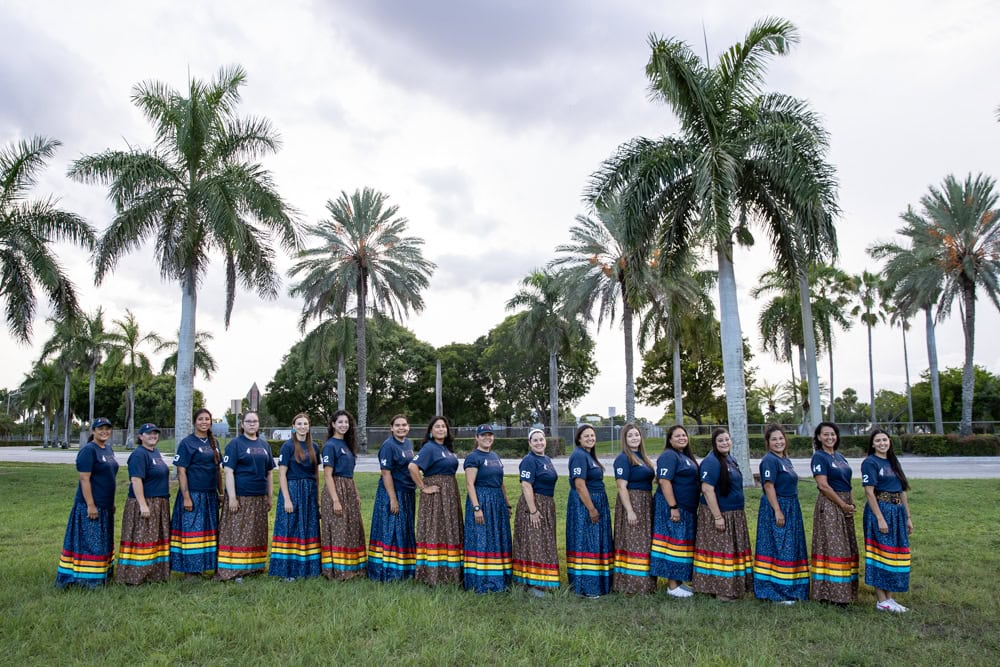
Each skirt was handmade and donated by an Indigenous artist, tailored for each player and stitched with their names.
These skirts served as powerful symbols of identity, a reminder of the nations and families each woman carried into the rink.
With only one practice together, they would soon face established teams who had played alongside each other for years.
First Nations Hockey was created to do more than field a team. Its mission is to unite tribes from the U.S. and Canada, celebrate Indigenous culture and build a sisterhood across generations. That vision became reality in August 2025 when the First Nations Women’s Hockey Team made its debut at the Amerigol LATAM Cup.
Sponsored by the Florida Panthers, NHL and NHLPA, the international tournament marked the first time an all-Indigenous women’s hockey team competed at this level.
The roster represented ten tribes, Batchewa, Mohawk, Chippewa, Kainai, Obijway, Simpcw, Suislaw, Choctaw, Cayuga and Cree, with players ranging in age from 18 to 65.
The team was founded and managed by Karen Ota-O’Brien, a member of the Simpcw people of the Secwepemc Nation, whose decades of leadership in women’s and Indigenous hockey made this moment possible.
She chose players who would carry the pride of their communities into every shift.
Anderson brought decades of experience and the weight of family legacy.
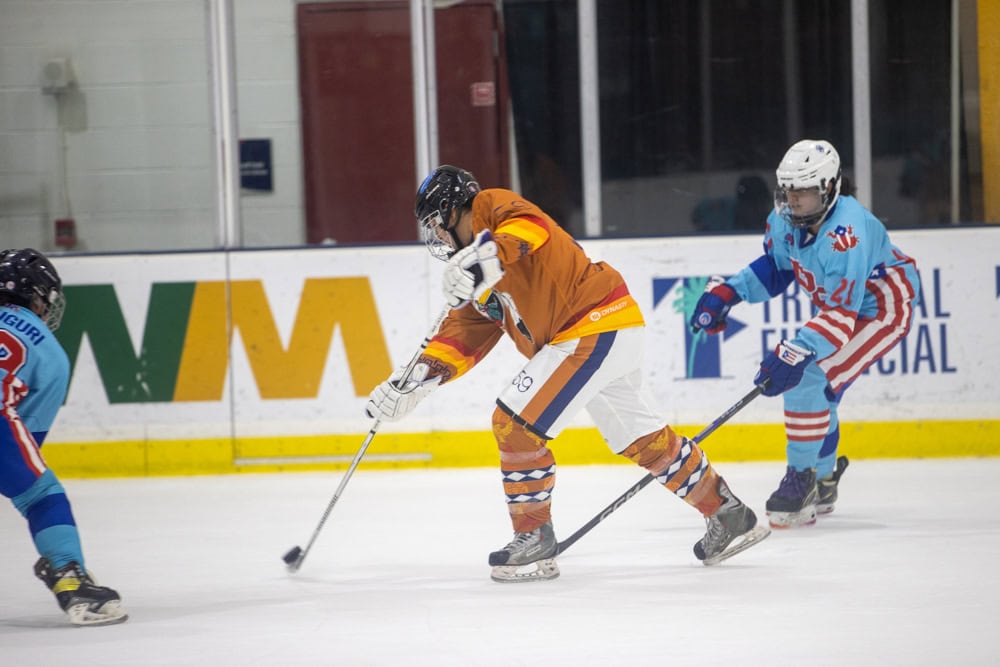
Though she grew up in Oregon, summers in Oklahoma and Choctaw Nation Labor Day family reunions kept her connected to her heritage.
She credits her grandparent, Norman and Opal Ludlow of Smithville, Oklahoma, with instilling a love for her culture. That connection has guided her personally and professionally.
Today, she serves as a Native education and development teacher on special assignment in one of Oregon’s largest districts, supporting more than 70 tribes among local students.
Her path to the LATAM Cup was unexpected.
“It was actually just really random and luck,” said Andeson. “I had someone reach out to me that knew that I played hockey and said, ‘Hey, you know, we heard that you’re native, right? You’re a member of a tribe.’ I said, I am of the Choctaw Nation, Oklahoma. And they said, Oh, okay. Well, here’s an opportunity if you wanna reach out.”
The connection led her to Ota-O’Brien, and eventually to the ice alongside Indigenous women from across the continent.
For Anderson, hockey had always been more than a game.
“The opportunity to connect my Choctaw culture while playing a sport that was my community while I journeyed to my identity as a Choctaw now… was huge,” she said.
Tucker’s journey came from another angle.
Growing up in Portland, Oregon, where hockey opportunities for girls were relatively scarce, she primarily played on boys teams before transitioning to academy hockey across the U.S. and Canada.
That path eventually led her to Rivier University in New Hampshire, where she now plays Division III hockey while also training in the Air Force ROTC.
“I started when I was 10,” said Tucker. “It was so, so much work driving everywhere, and like a lot of time on the road, and I wouldn’t trade it for anything. I spent so much time with my parents, and I’m an only child, so it was just me.”
Though separated by two decades in age, Andeson and Tucker’s paths intersected in a moment of chance.
Anderson once coached Tucker as a child, and years later, they ran into each other in an airport. There, Anderson encouraged Tucker to join the First Nations roster.
That meeting brought together one of the team’s oldest players with its youngest, bound by heritage and a shared love of hockey.
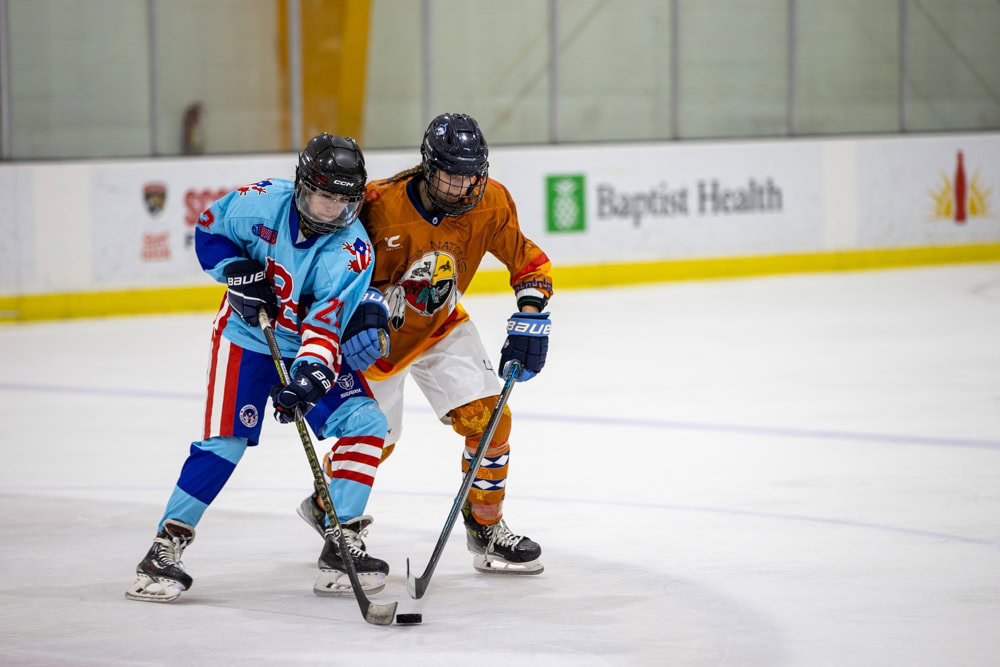
“It was such a great experience, just meeting all these like powerful, strong women from all over the…not even the country, all over the continent,” said Tucker. “We had so many Canadian girls, and it was just cool to hear everybody’s stories, and like the differences between everybody’s tribes, and kind of their like backgrounds and stuff.”
Tucker noted that in Canada, Indigenous hockey is far more visible. In the U.S., Indigenous players are less represented.
“Especially being in America, it was really cool for other people to see that,” she said.
The team carried their culture with them throughout the tournament and despite vastly differences in age and skill level, they quickly formed a team strong enough to defeat established teams.
Against the odds, they advanced to a hard-fought championship game against the Caribbean team.
“We got second place. We lost in the championship round, but it was really exciting. I’m so proud of how well our team did,” Tucker said.
The loss may have stung, but the achievement went deeper than the scoreboard.
Both players see this as the beginning of something larger.
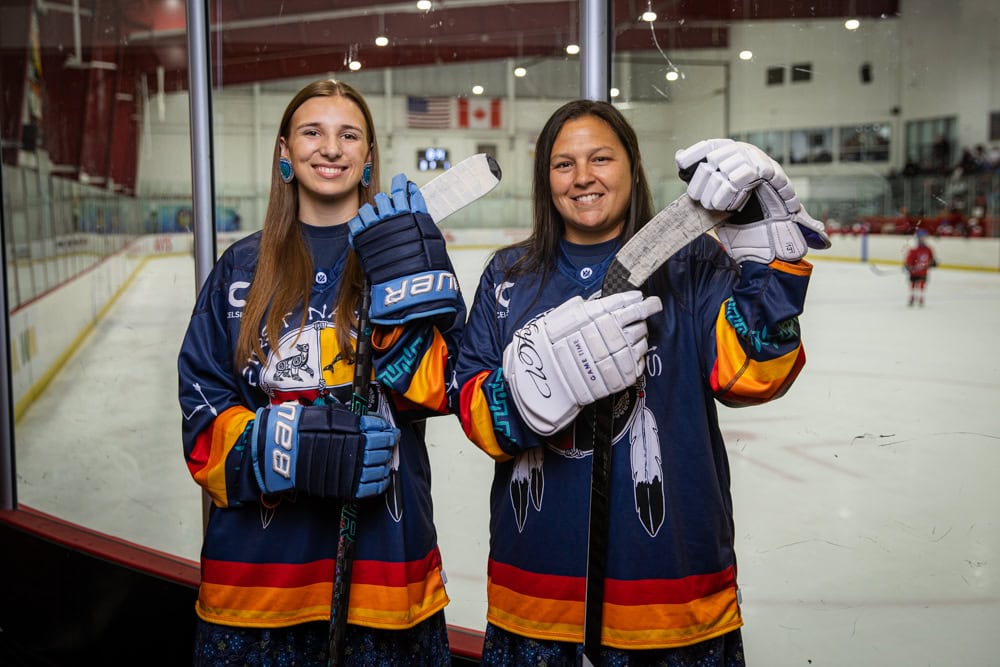
Anderson hopes it will spark greater access to hockey for Indigenous youth.
“It is incredibly expensive. So, creating programs or opportunities for kiddos who might not necessarily have that… and representation with coaching as well. Growing up, I didn’t have a coach who looked like me. I want kids to know they’re not just welcome in this space but celebrated for being there.”
Tucker hopes that her story proves opportunity exists, regardless of background.
“I don’t come from a hockey family, or from a state that’s hockey-focused,” she said. “But I hope people realize they can make it no matter their background. Communities will support them, and there will be opportunities.”
Though the scoreboard in Florida showed a second-place finish, the First Nations Women’s Hockey Team achieved something far greater.
The team proved that Indigenous women belong on the ice, in the spotlight and in the history of the game.
For more on the First Nation’s Women’s Hockey team, visit www.firstnationshockey.org/.
